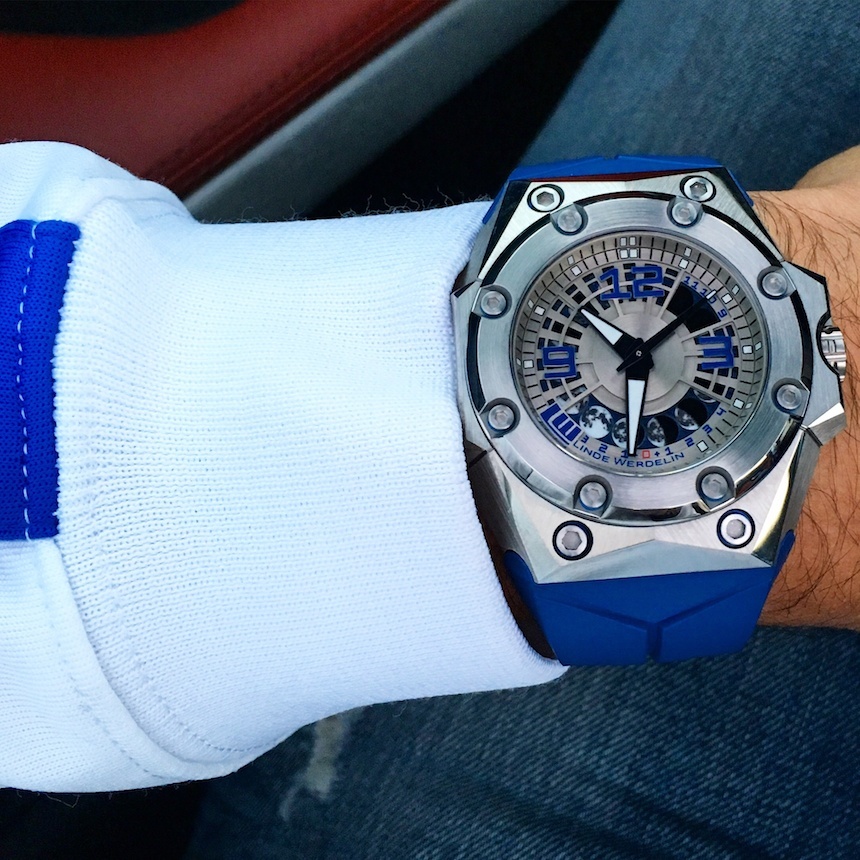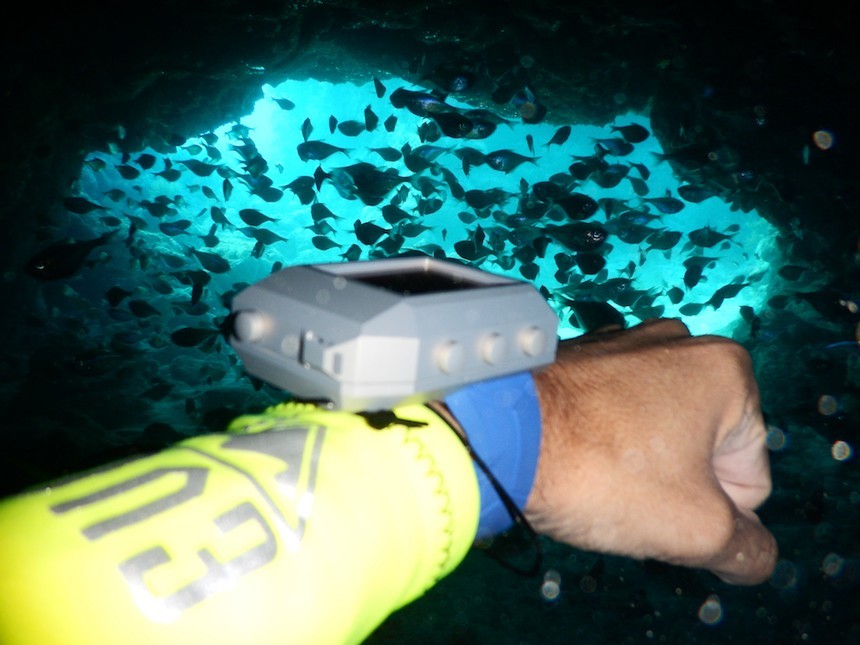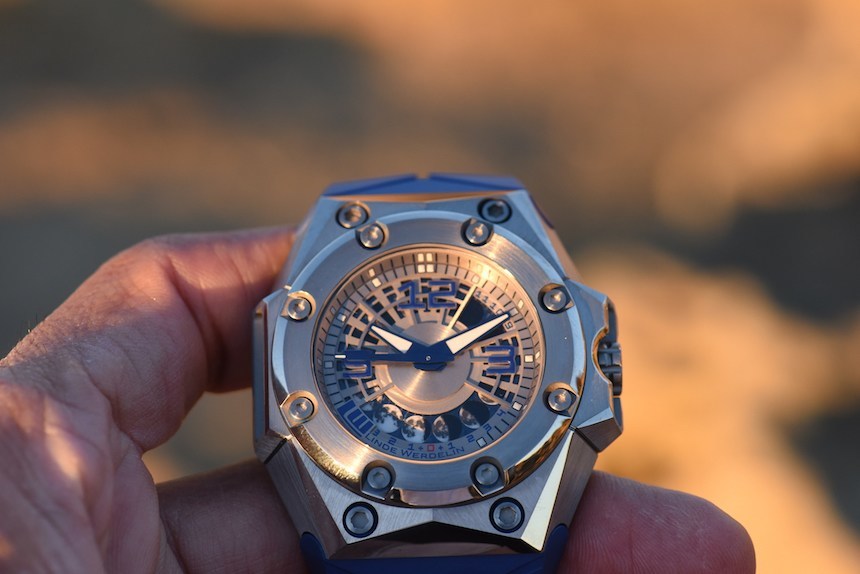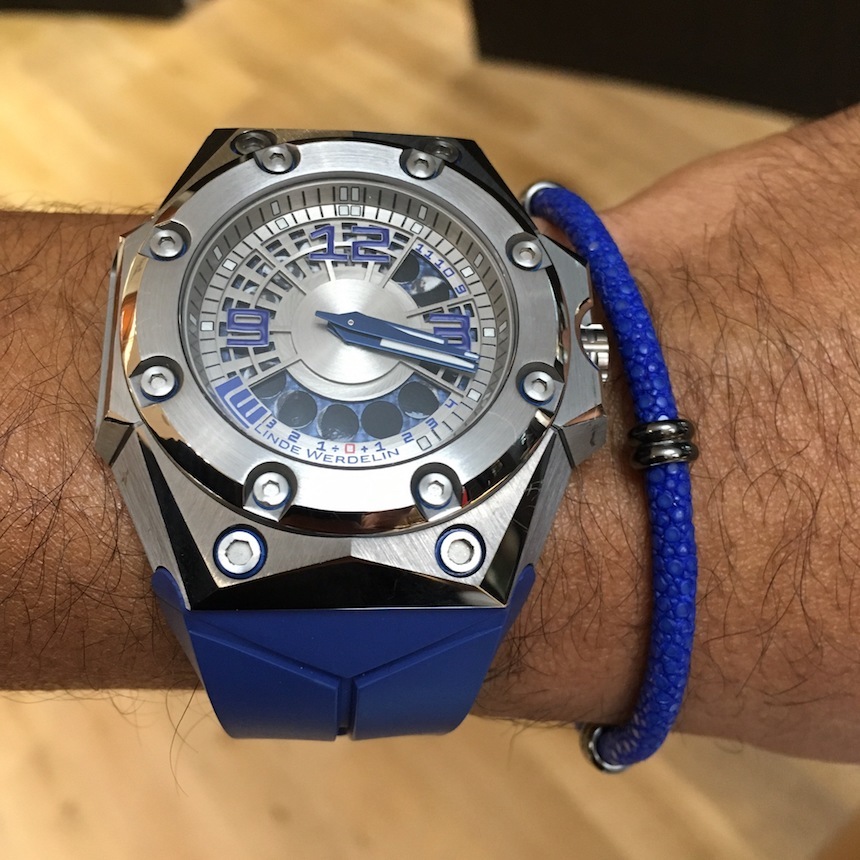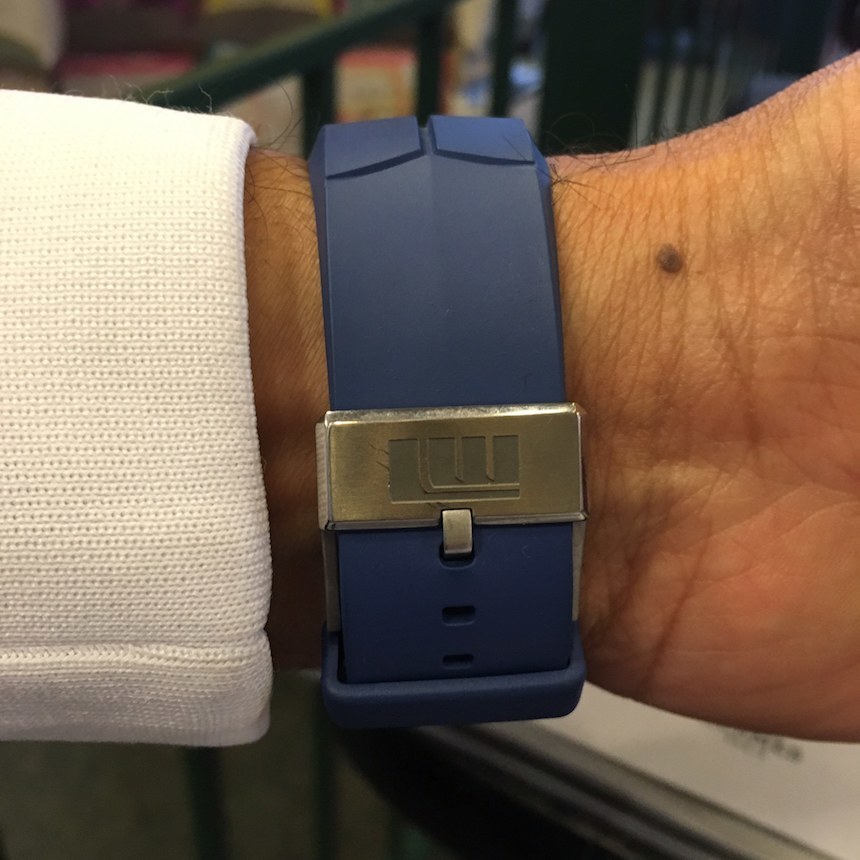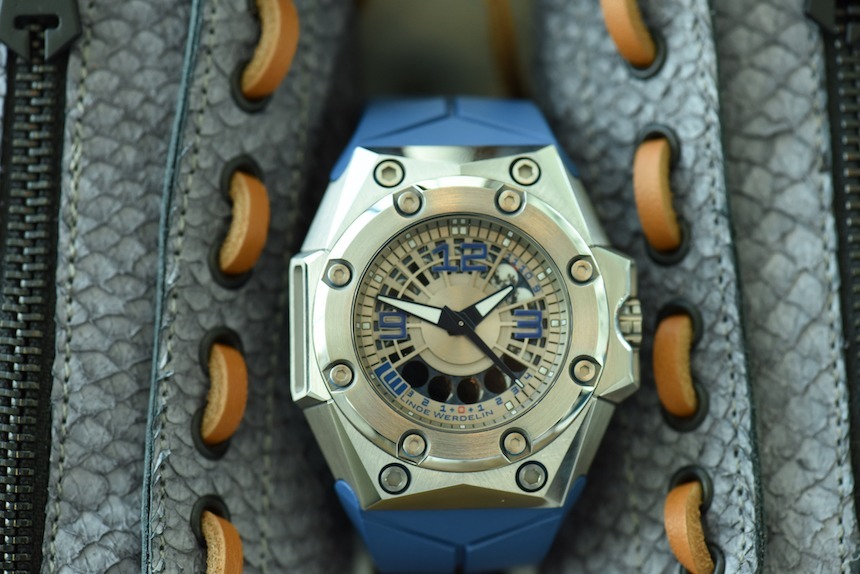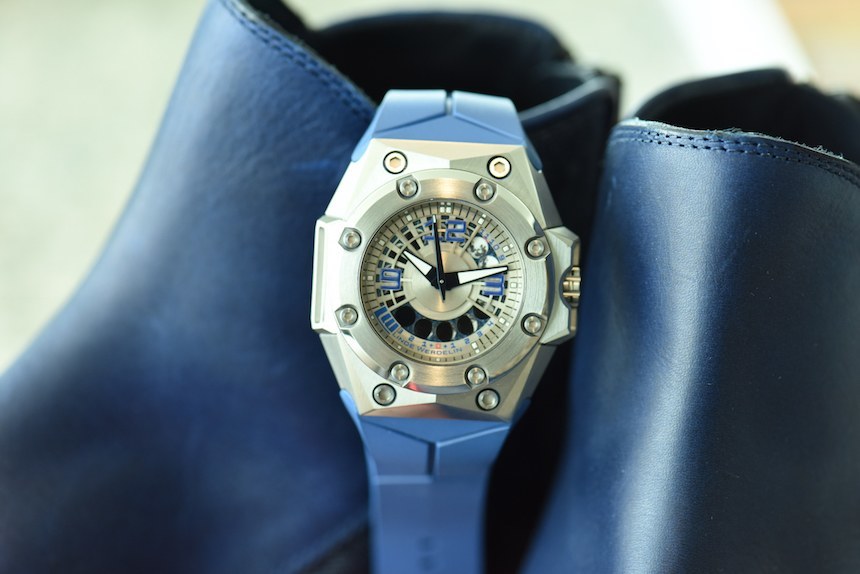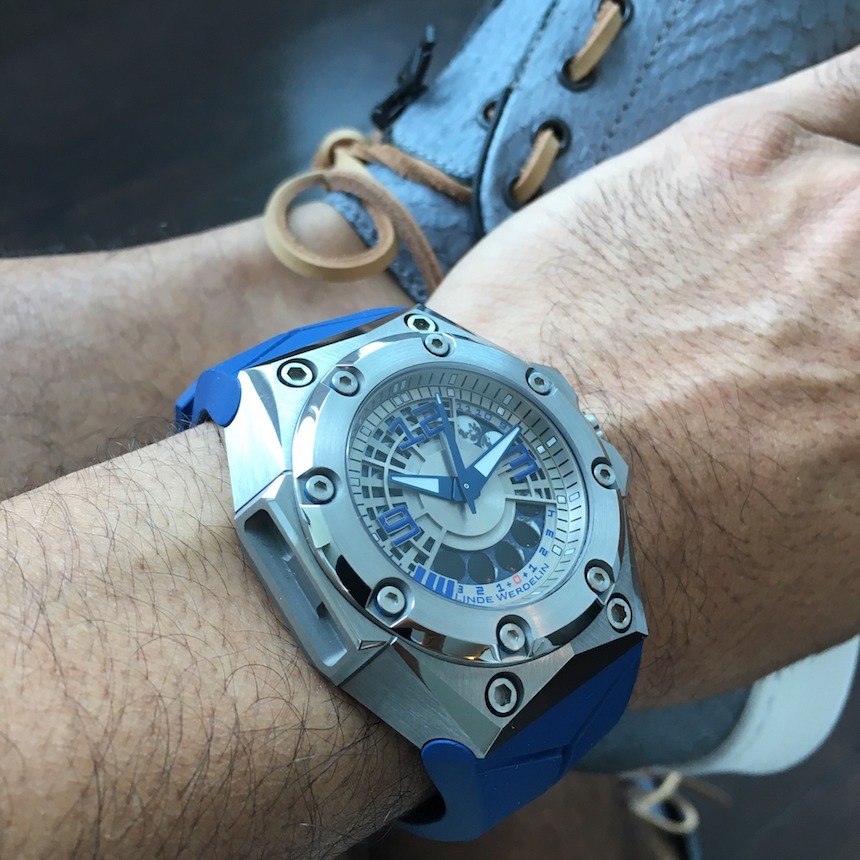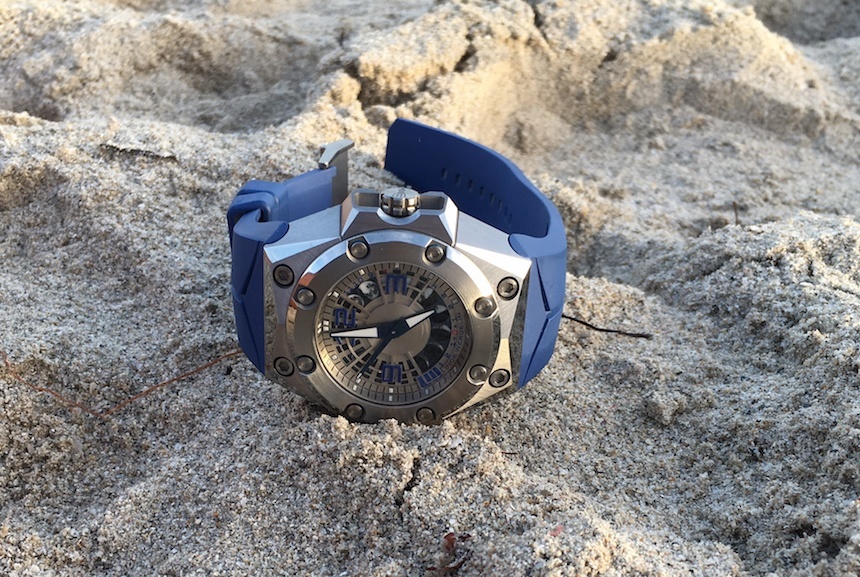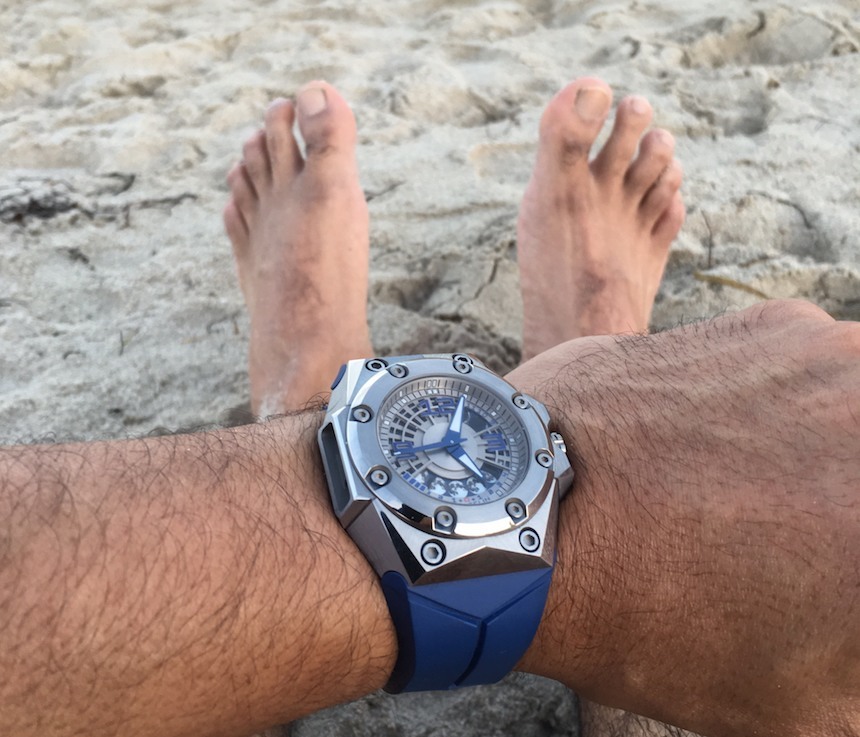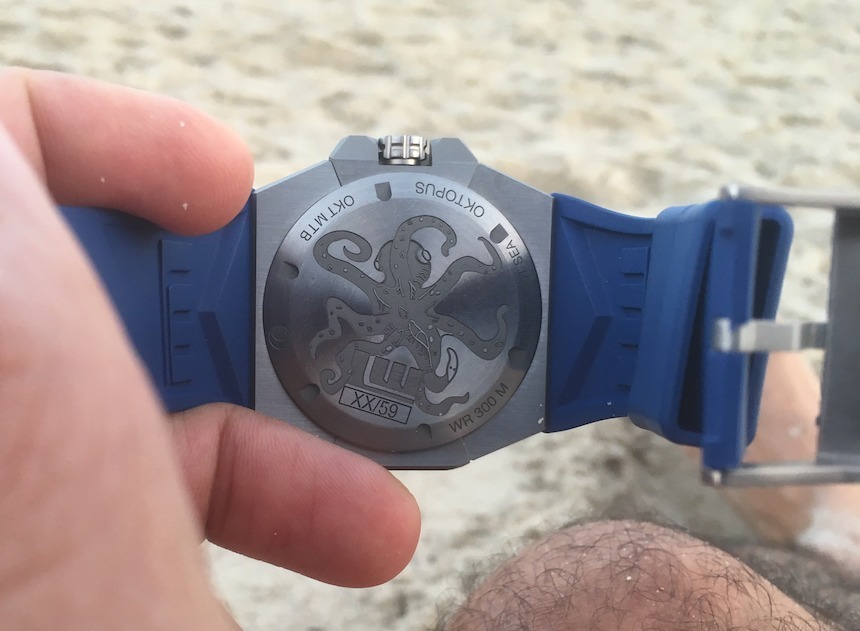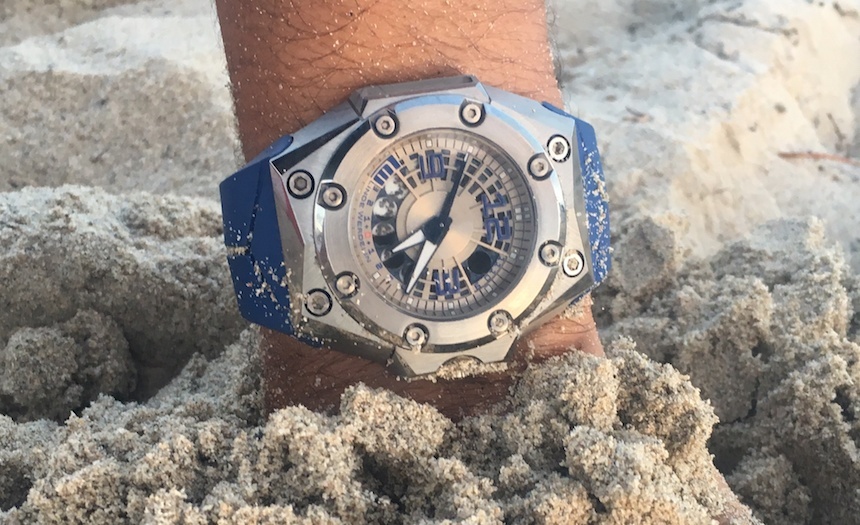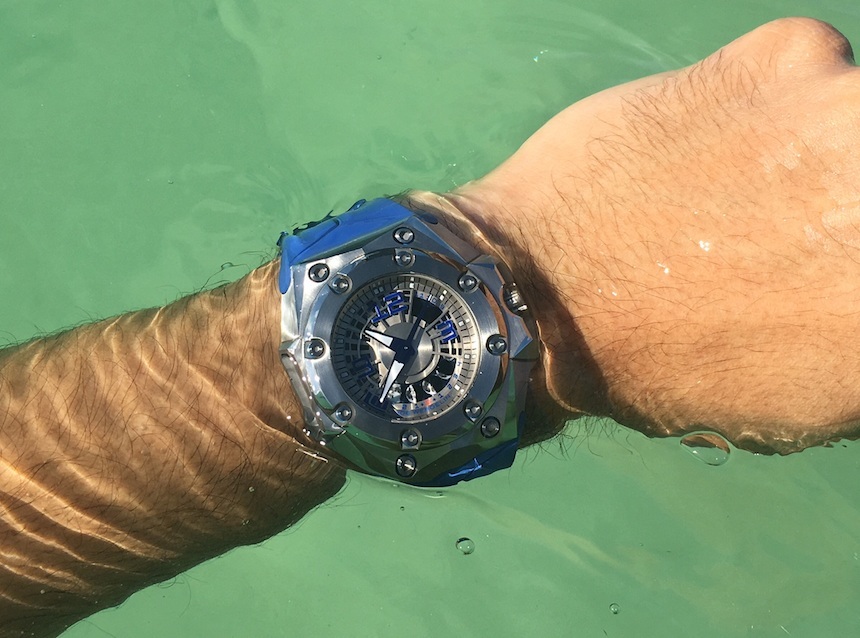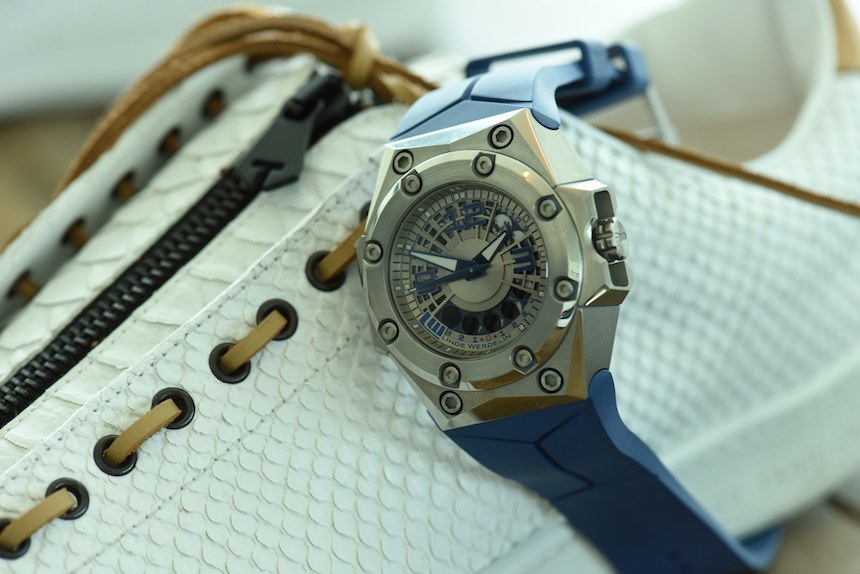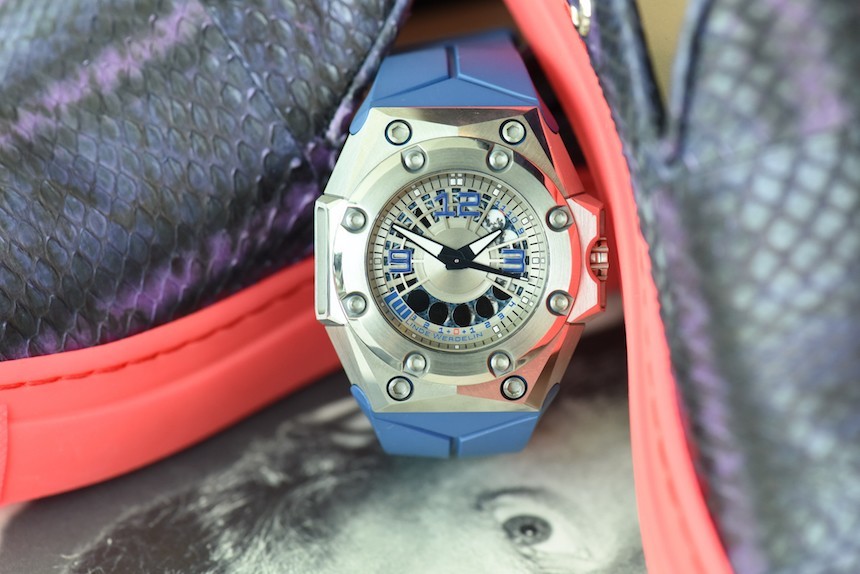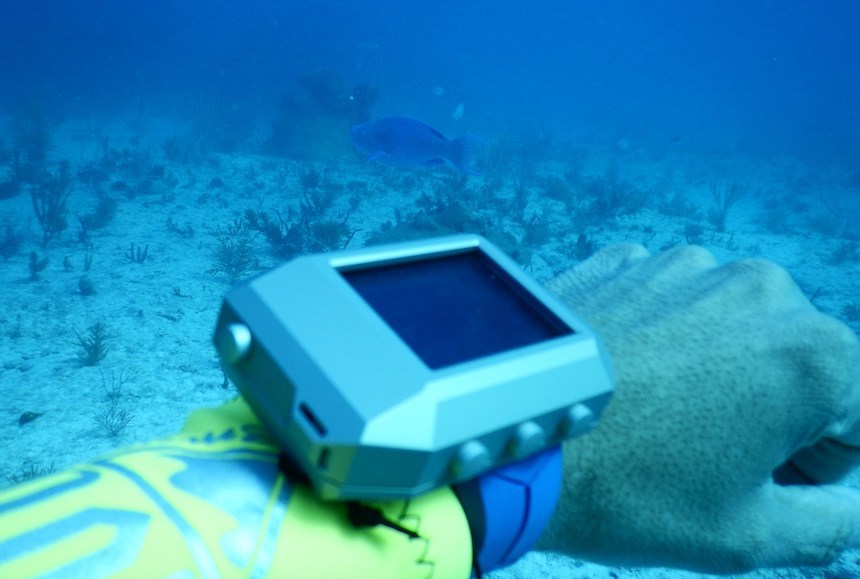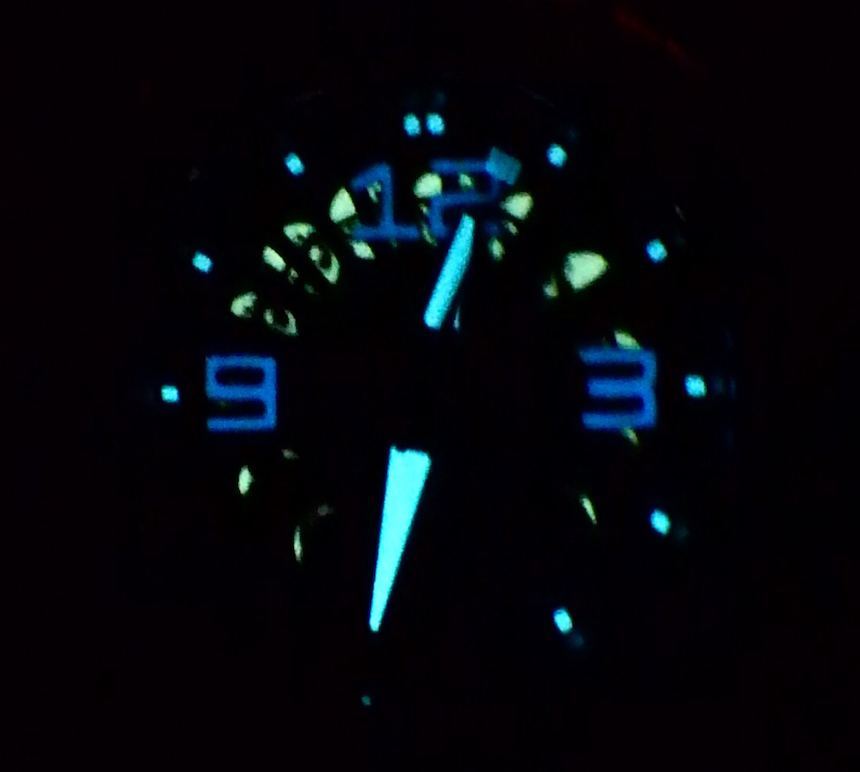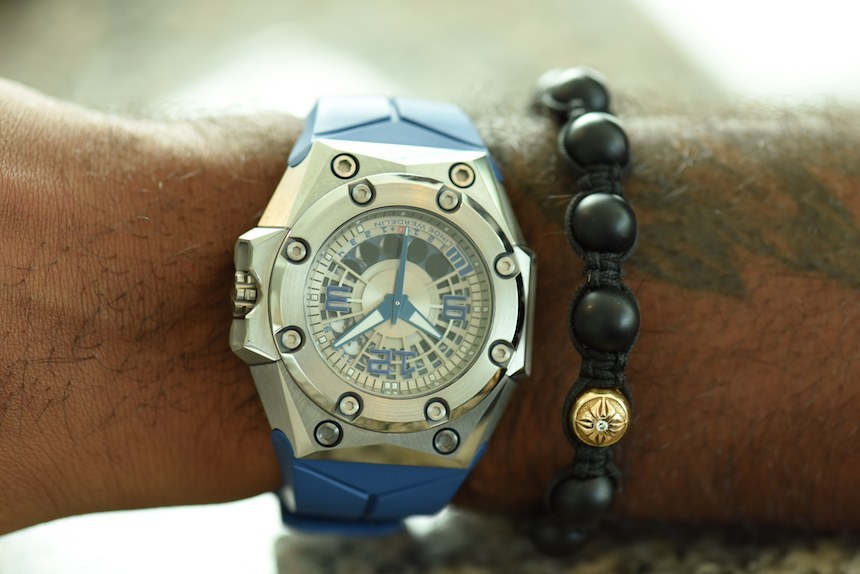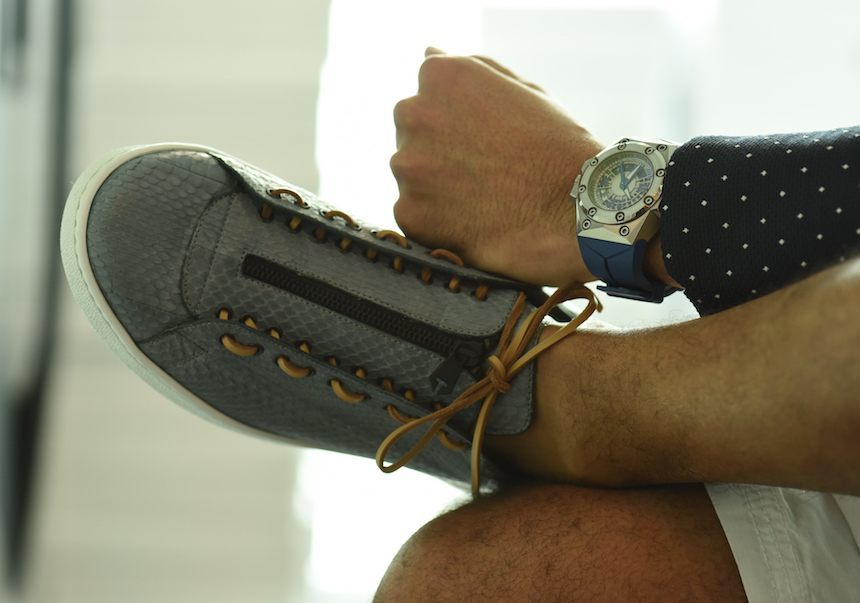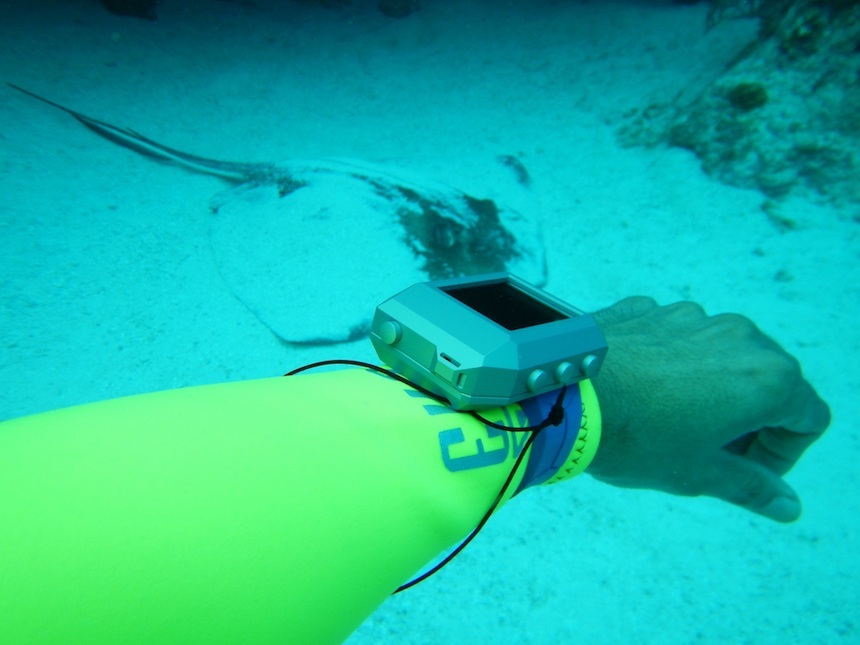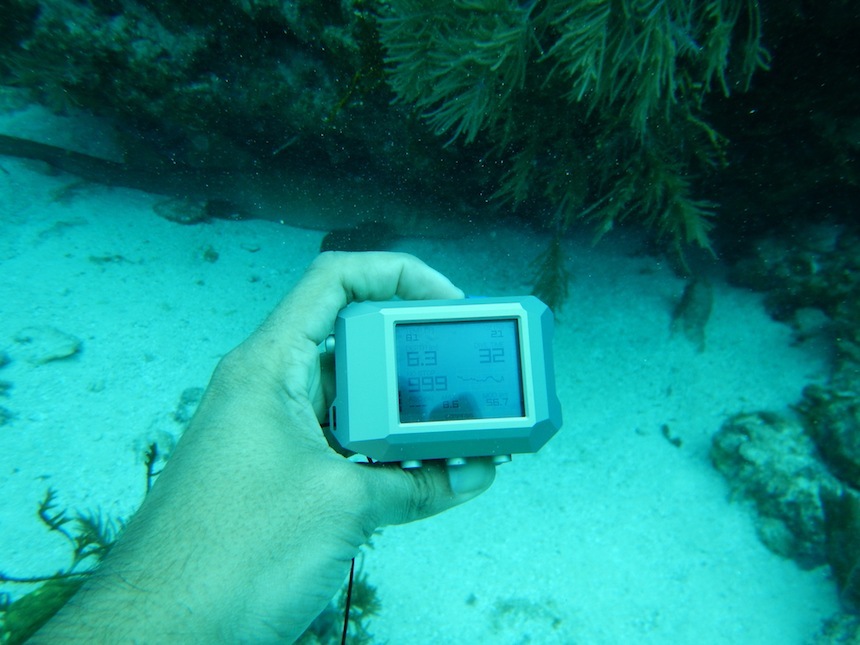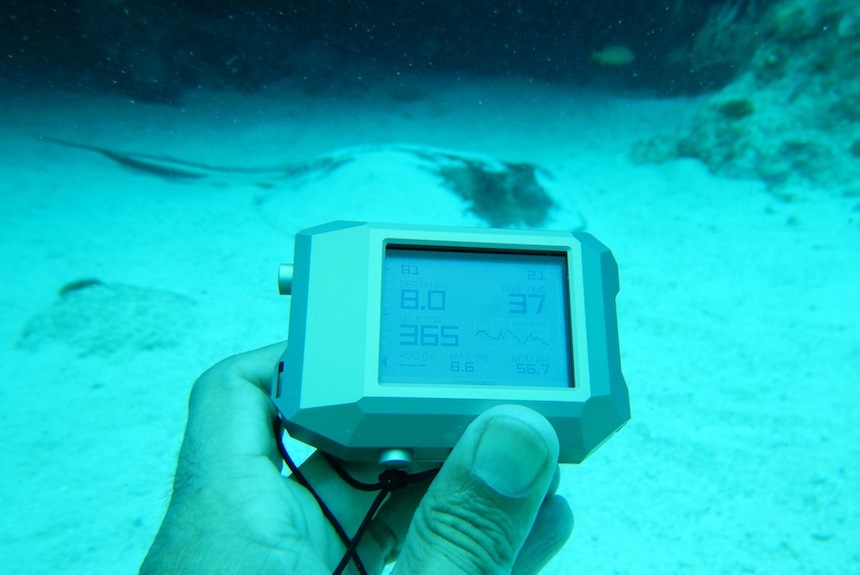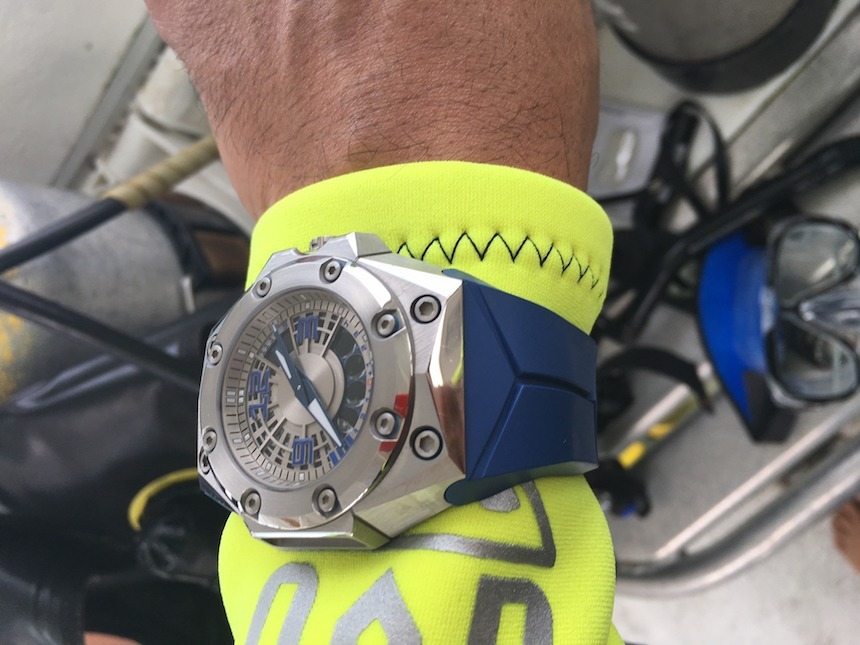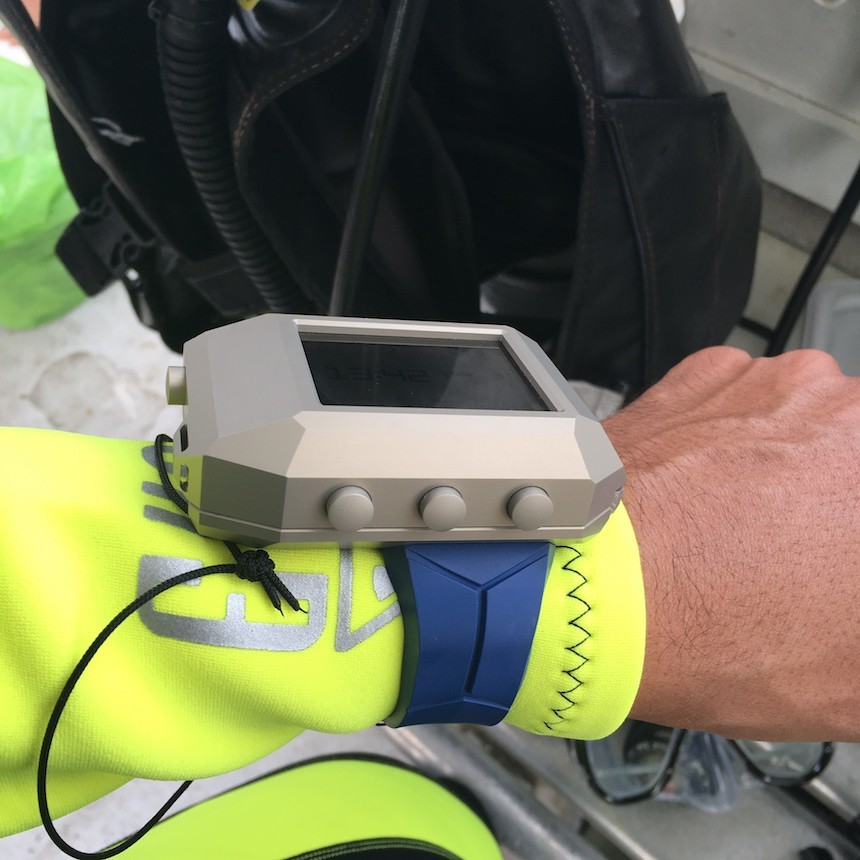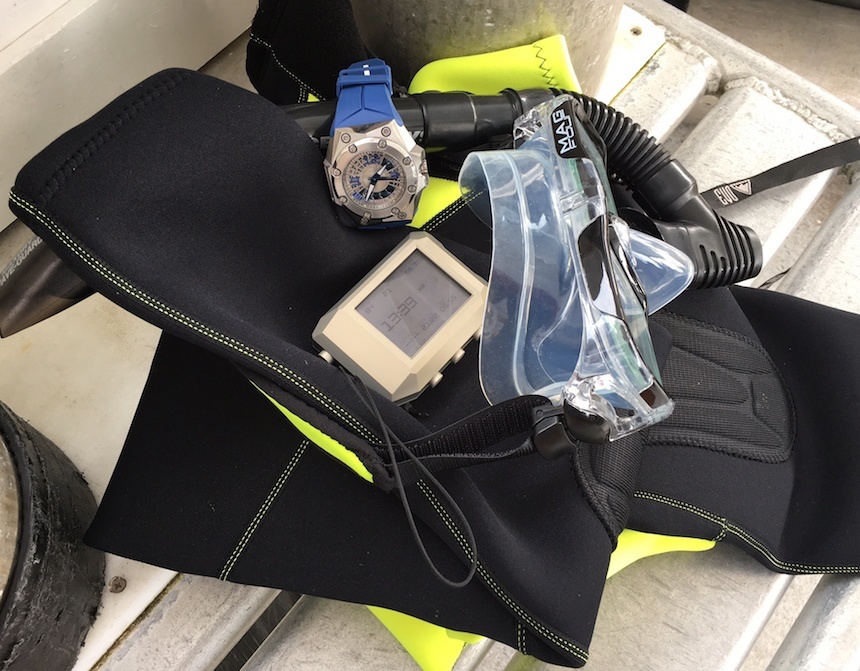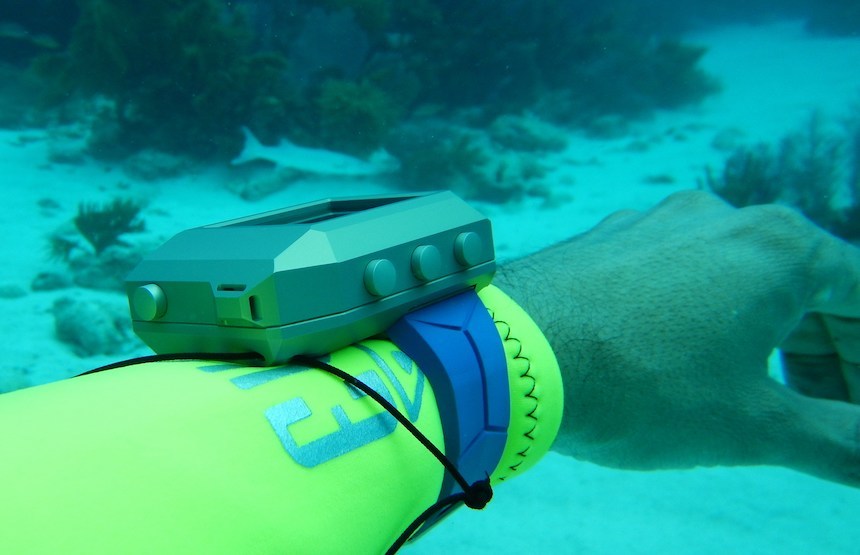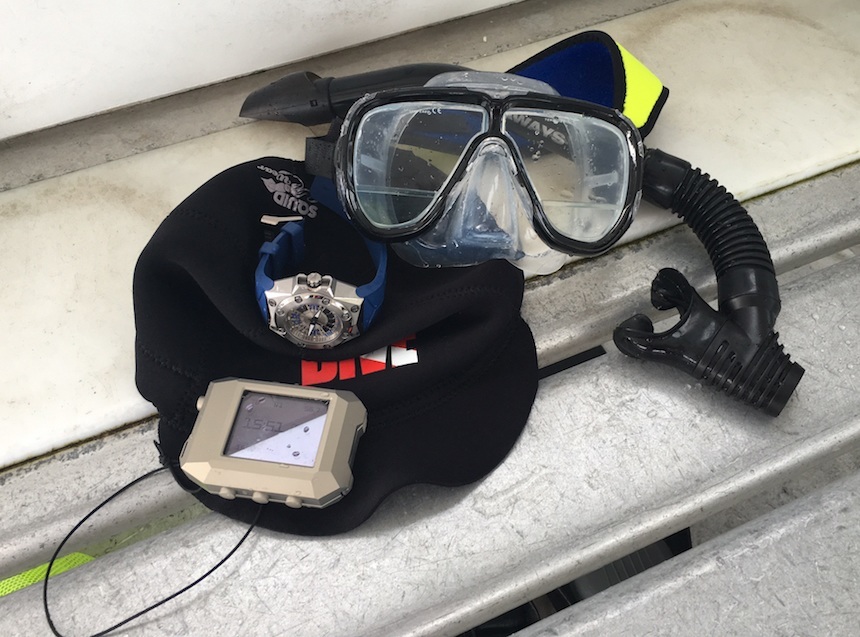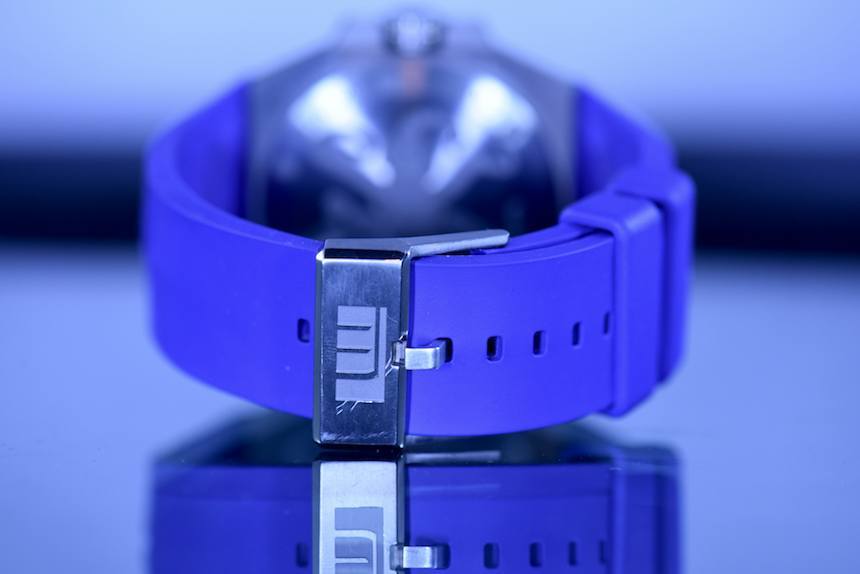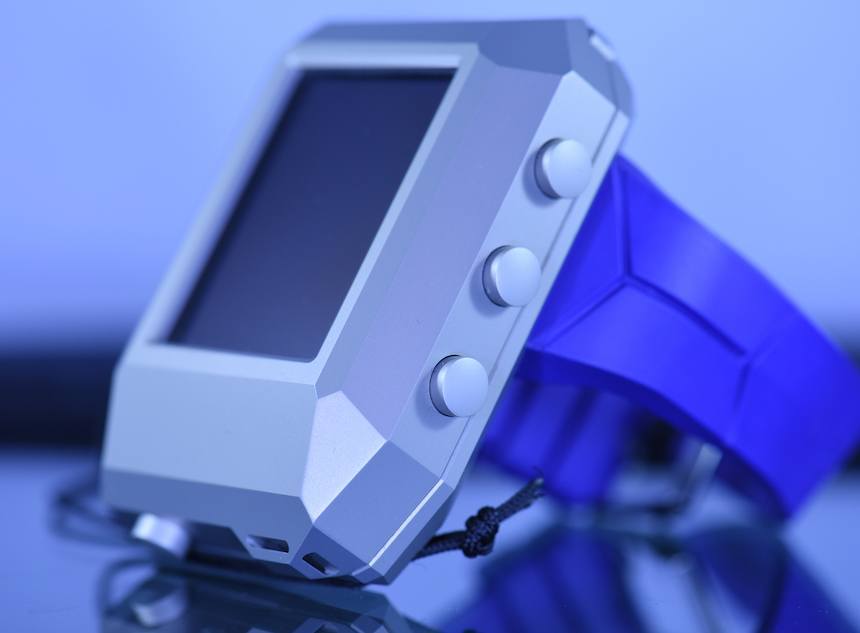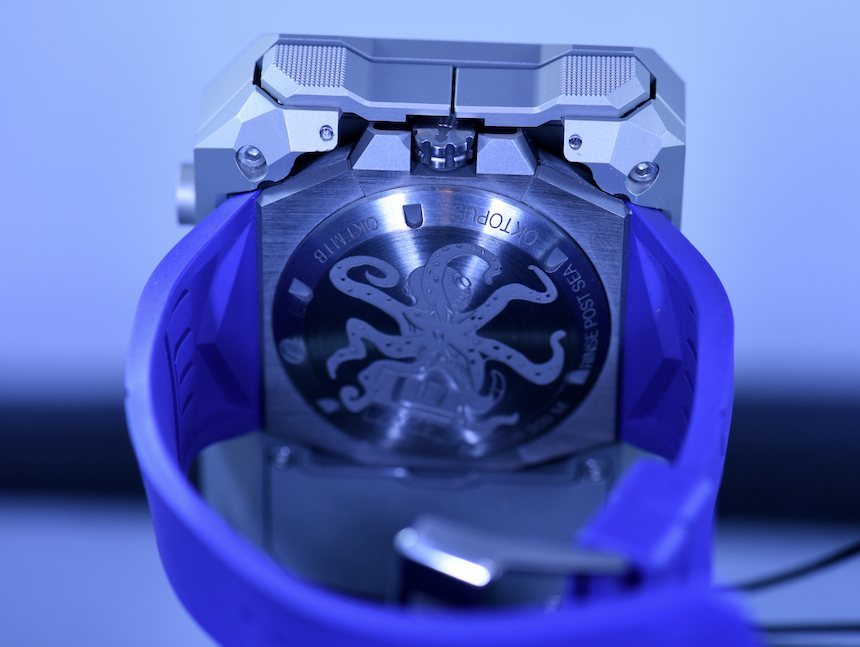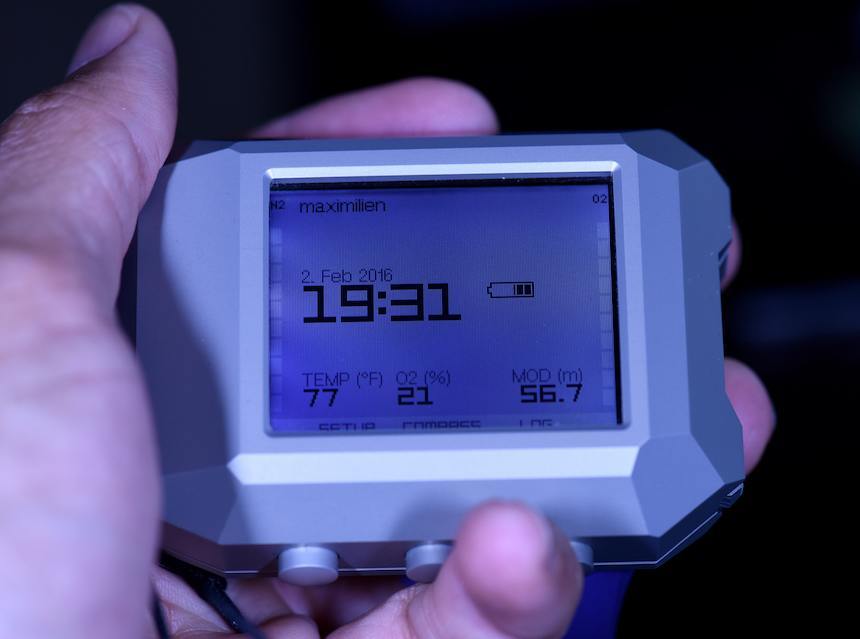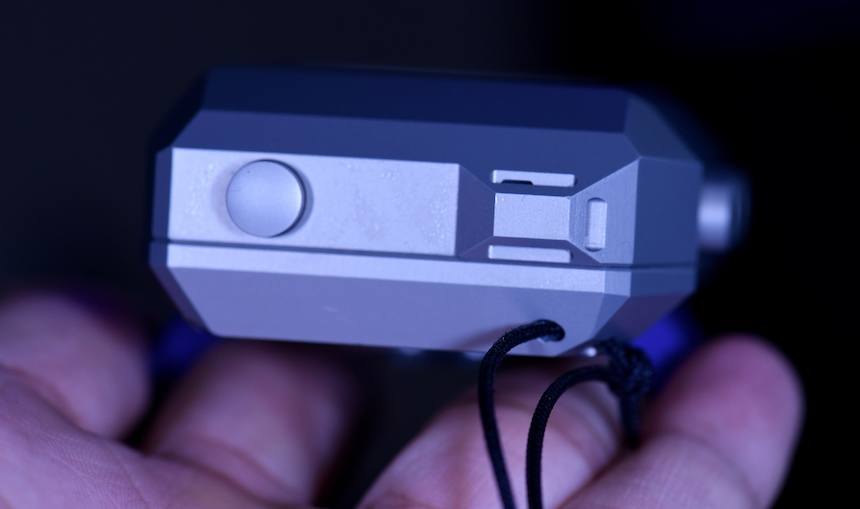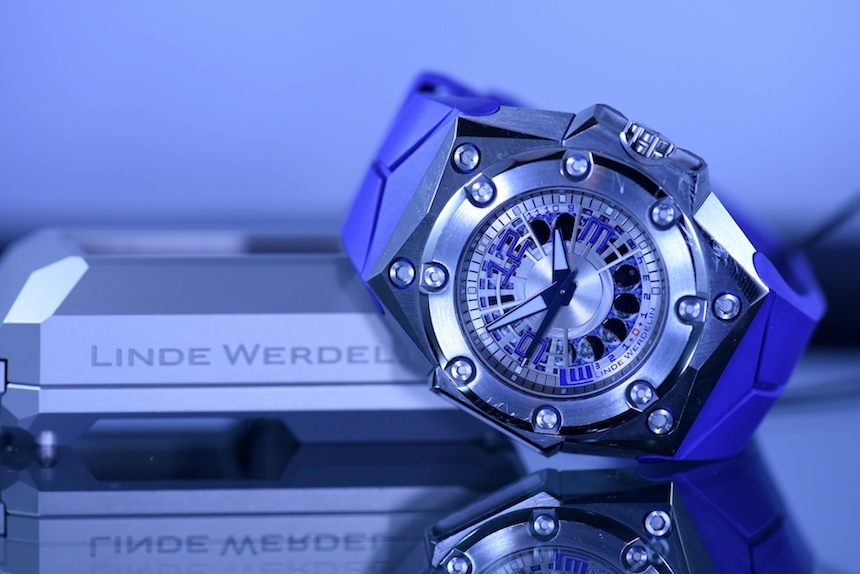
After receiving the Linde Werdelin Oktopus BluMoon and The Reef, the first thing I tried to do was to mount the Linde Werdelin Reef on the watch. All LW watches have a similarly shaped case design that, while being avant-garde and helping define the design language of the brand, is also actually functional. Specifically, the case is designed to snugly fit the Linde Werdelin Reef and the Rock instruments. The Linde Werdelin Reef I received was in a matte gray and immediately feels like a solid instrument. Before even charging it, I wanted to first see how it fits. And the whole thing is somewhat easy and straightforward, though my hesitation in fear of scratching the case meant I was more careful than usual to mount it.
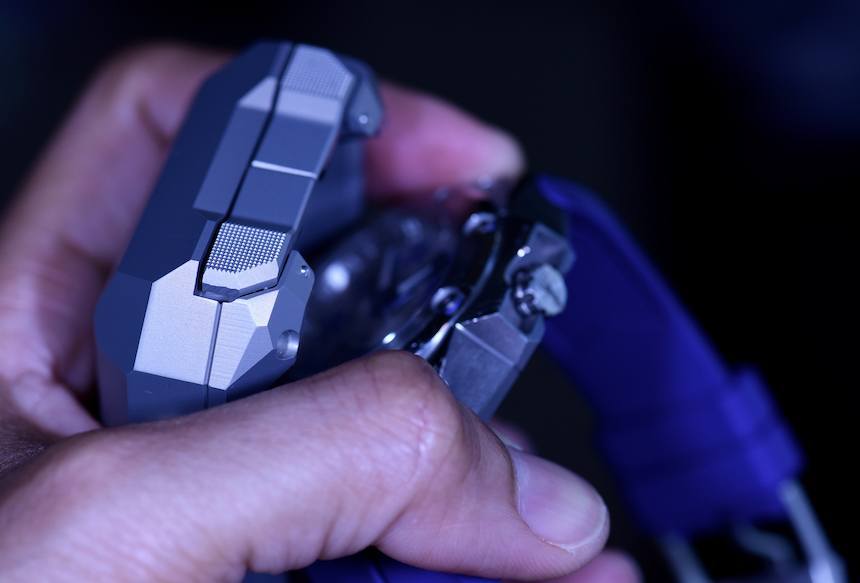
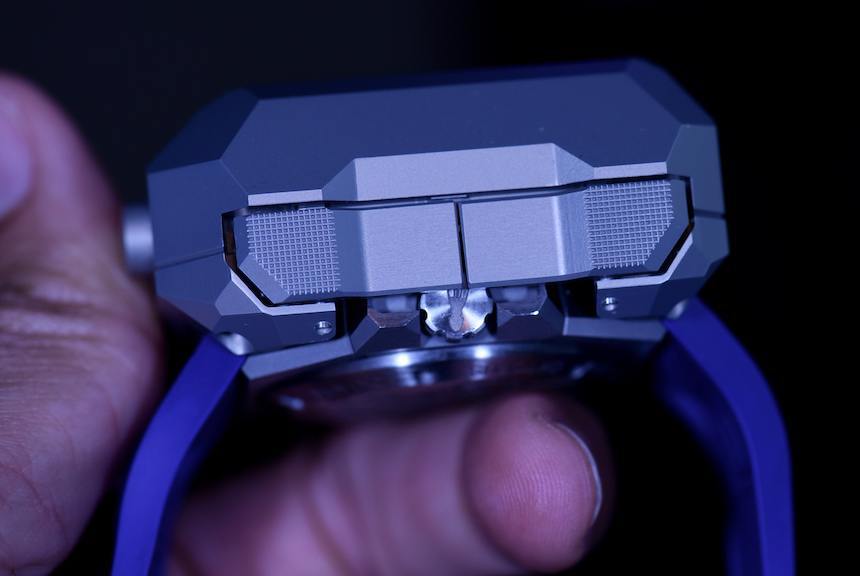
The easiest way I found to install the instrument was to secure the left hinge on the left side of the case first, and by pressing the two pushers on the right side of the Linde Werdelin Reef case with my index and middle fingers, just push a bit down on the Linde Werdelin Reef until it snaps into place. On land, the process seems cumbersome, especially as the Linde Werdelin Reef is at least twice as large and twice as thick as the watch itself, however, in the water, I found it a lot easier to operate. Once mounted, the large sapphire-covered screen is perfectly located on wrist, and I never felt it to be annoying or getting in the way as I dove, performed various tasks, and used my camera for taking underwater photos and videos. The Linde Werdelin Reef also comes with a thin strap loop which I found well-designed as it gives more security mounting and removing the instrument once back on the dive boat, where typically things are never stable, unless you are super lucky with calm water.
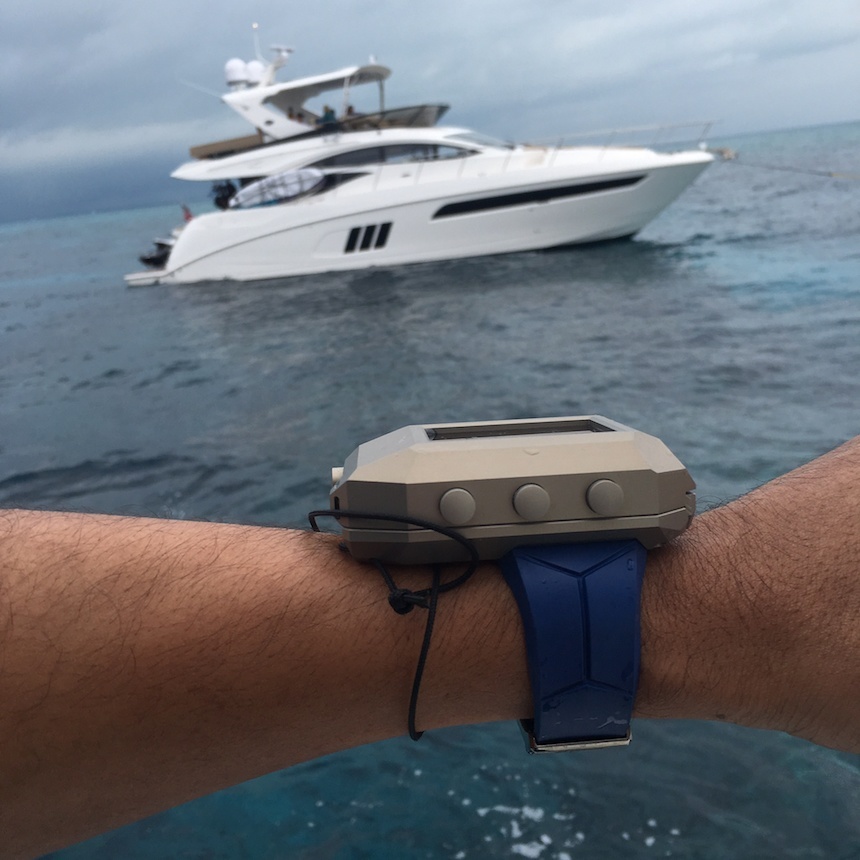
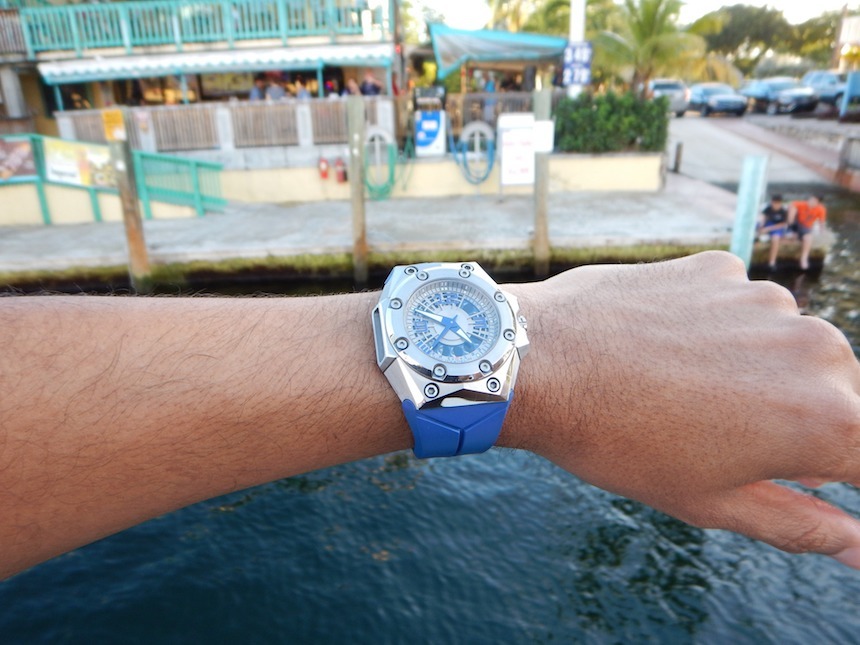
Besides the two pushers on the right used to help mount and unmount the instrument on the watch, there are four buttons used to turn on and cycle through features on the Linde Werdelin Reef. There is one on the left side located on the top that is used to turn on and off the instrument, as well as a back button (when moving from one screen to the previous). The ones on the long bottom part of the rectangular-shaped instrument are used to move up and down through the various pages (the leftmost and rightmost buttons), and the one in the middle is used for selecting or confirming choices. There are no markings on the Linde Werdelin Reef case itself, other than the engraved Linde Werdelin logo, but after using it in one dive, it becomes pretty natural. Also, when turned on, there are indicators on the screen, e.g., Up and Down arrows, and Enter for the bottom buttons.
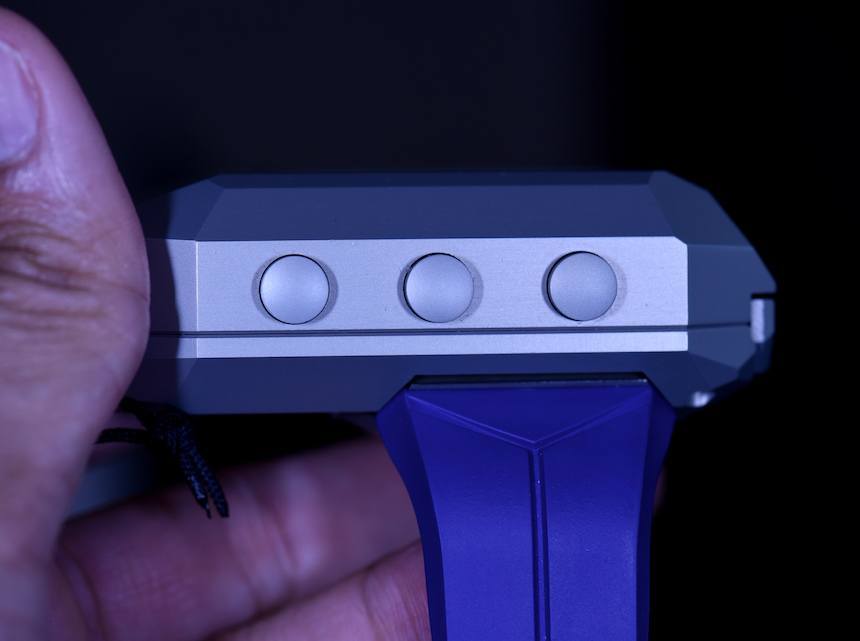
The overall functionality of the buttons is not hard to comprehend, and I performed the first two dives without going through the PDF manual that comes with the instrument, it’s worth mentioning that on land, without gloves, I do find the buttons very hard to press. This is no doubt a result of the high-quality construction meant to allow the buttons to be usable underwater at the 300-meter maximum depth it is designed for. In the water, again, the experience is better and easier. The best way I could describe it would be like the experience as pressing a really stiff chronograph pusher that is 5 to 10 times larger than most typical chronographs. Pressing the button is hard at first, but once past the necessary pressure point, it clicks satisfyingly with a default chirping sound confirming that the input was received.
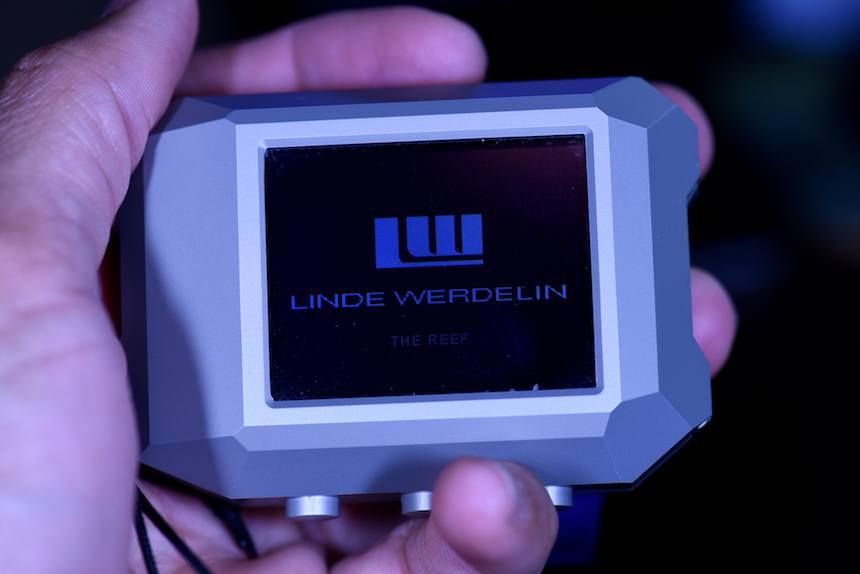
Charging the instrument is done via standard Micro USB type B connector, but instead of having any type of connector directly on the instrument itself, the Linde Werdelin Reef has a black plastic mount that you can use and which exposes a USB connector. Obviously, having it on the instrument would make the case difficult to waterproof. The black dongle has two electrodes that connect with the instrument at two exposed metal hinges that are used to charge the Linde Werdelin Reef. I found that the Linde Werdelin Reef charges relatively quickly in about two to three hours. Once fully charged, the instrument lasted for the entire time I was on vacation and for my six dives, which were probably five-and-a-half hours, total. The battery indication of the instrument was at about 1/4 charge remaining when I was done.
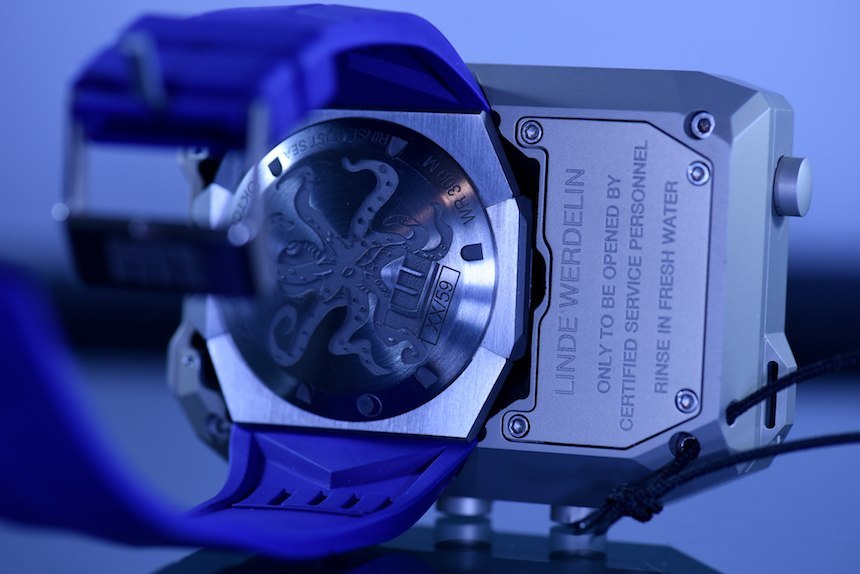
Like many other digital dive computers, the Linde Werdelin Reef is water-activated. What this means is that once turned on, the device will automatically activate and start logging a new dive only when submerged. On land or on boat, the screen you see has current time and indication of battery level, the current temperature, the percent of oxygen in the air, and the maximum operating depth (MOD) for the assumed gas mix you are using. At the bottom of the screen, the three buttons can be used to perform additional setup, see the compass screen, or review a log of your dives.
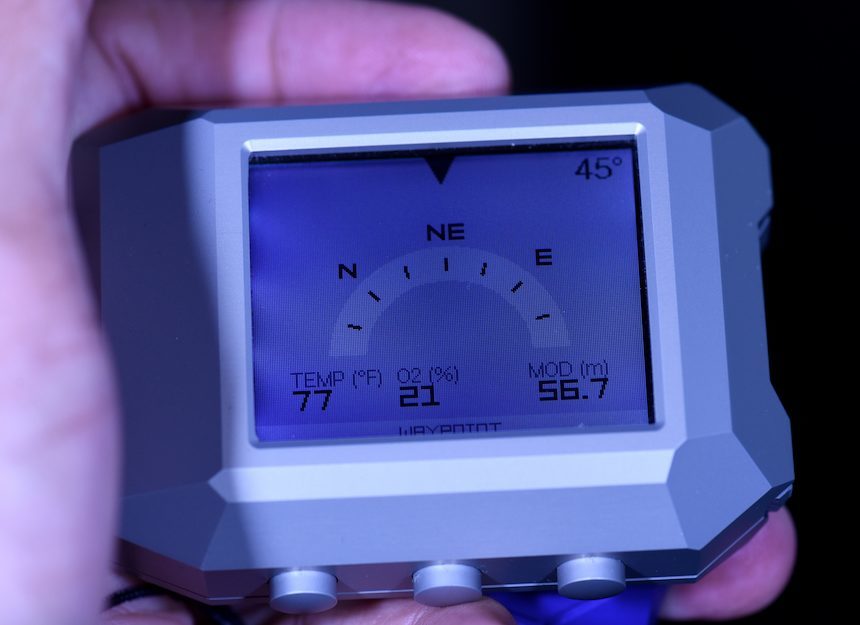
Pressing the setup option is used to adjust the computer’s settings. For instance, one can set the current date, time, and year, as well as customize the computer to the owner, select color pallets, units, and some of the information shown on each screen. Other more interesting settings are related to diving, such as water type, dive-mode, safety stop, the O2 level of the mix you are planning to dive with, the altimeter level at which you are diving (0 meters for sea level), and a planner for your next dives – which is mostly allowing you to define surface intervals, typical depth, and no-stop time. The other options are for advanced settings such as dive mode, water type (salt or fresh), setting the safety stop timer (typically 3 to 5 minutes at 15 feet to the surface), the depth at which a dive starts (defaults at 0.9 meters), as well as resetting the desaturation computation.
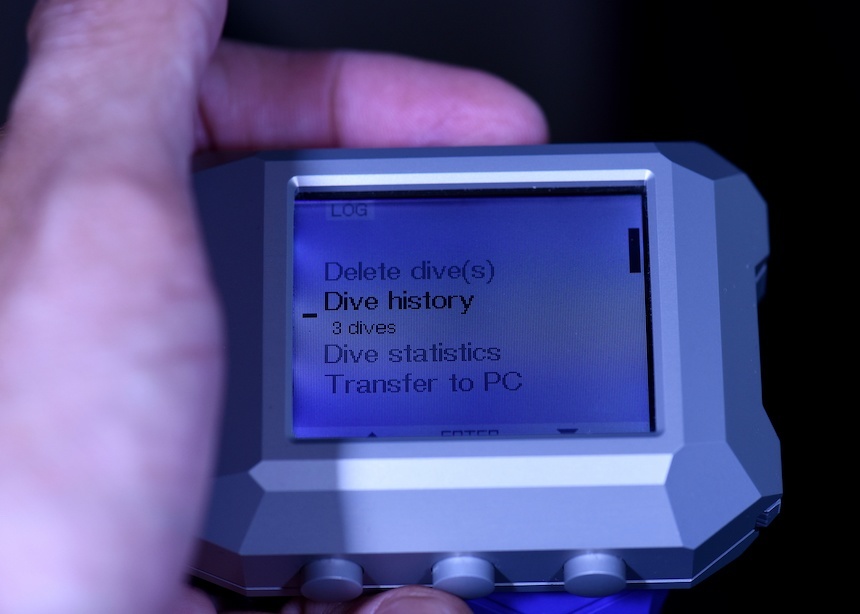
While I was able to customize it by painstakingly spelling my name using the three buttons and rotating through an on-screen alphabet before my first dive, I did forget to set the current year, so most of the dives show a year of 2010… All setting changes are best done prior to your first dive, as once the computer registers its first dive it becomes harder to change things, since the calculation of your no-decompression remaining dive time takes into account all dives you have recently performed.
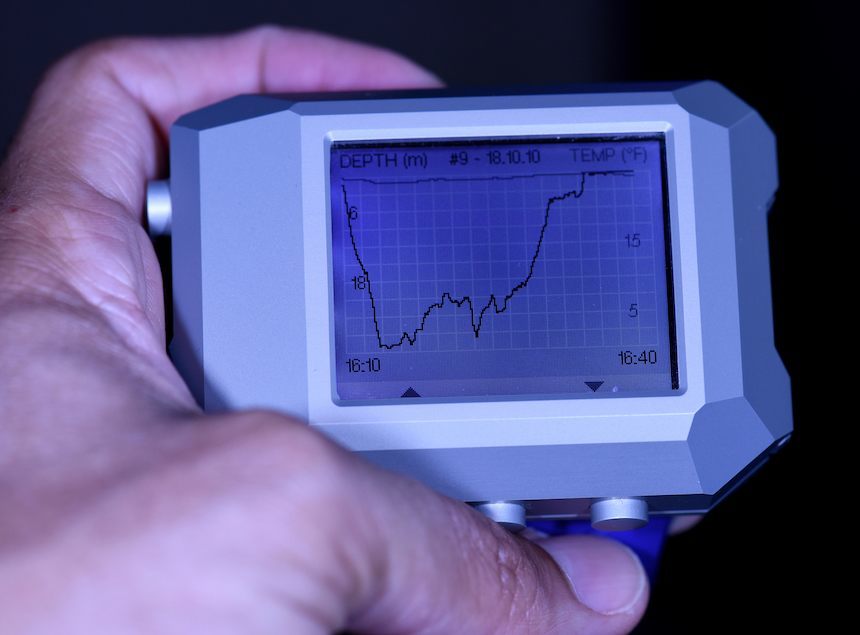
Many other advanced settings are also possible, such as various warnings designed to help you dive more safely. For instance, the computer’s chirping sounds can be used effectively underwater to indicate when you are ascending too fast, when you your dive is deeper than the recreational limits of 130 feet (40 meters), as well as when entering decompression limits, and when oxygen levels reach certain thresholds. All are defaulted to typical recreational diving values but can be overridden using the setup screens. Of course, other options also exist for the device itself, like updating the firmware, setting the backlight duration, volume for things like pressing a button or for warnings, as well as recalling the device’s current info.
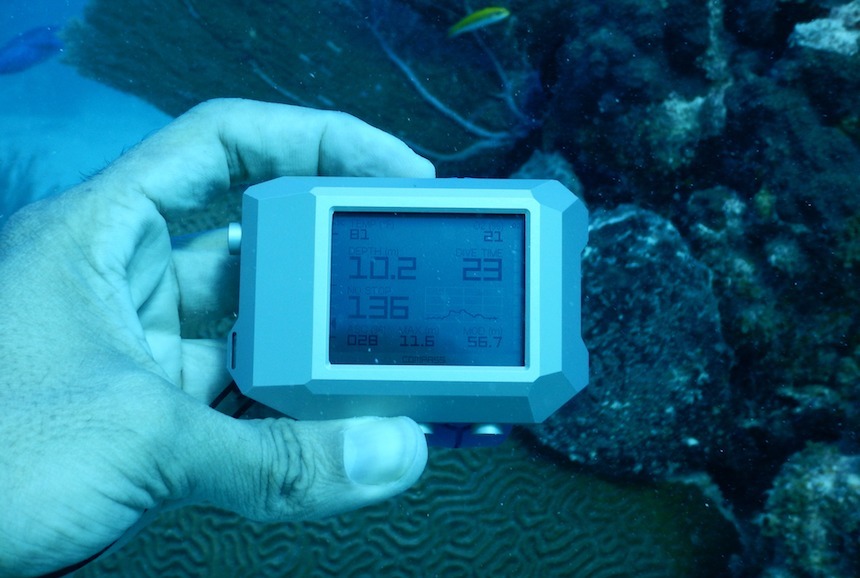
Once you enter the water, the computer is automatically activated at 0.9 meters and starts counting your dive as well as giving you your current depth and computing the amount of the time left before needing decompression, i.e., your no-decompression time limits. The current temperature as well as the O2 levels are also easily seen on the screen. I found the screen to be visible clearly especially with the backlight on even at my deepest dive which was about 101 feet where we reached the famous Spiegel Grove shipwreck off the coast of Key Largo. Once you reach the surface, the dive ends after you spend a few minutes outside of the ocean. All dive statistics can be recalled from the log as well as each dive in particular. You can also delete dives and transfer data to a PC via USB cable.
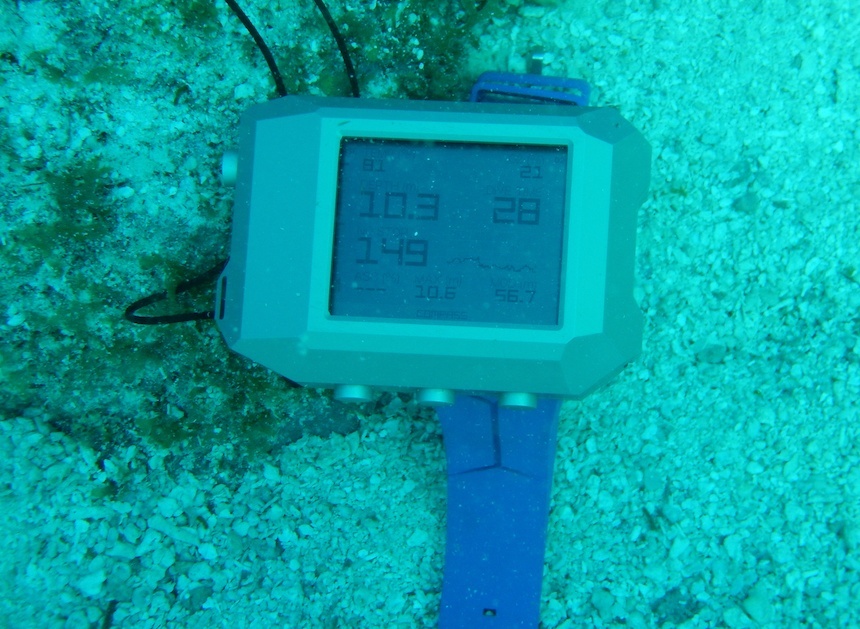
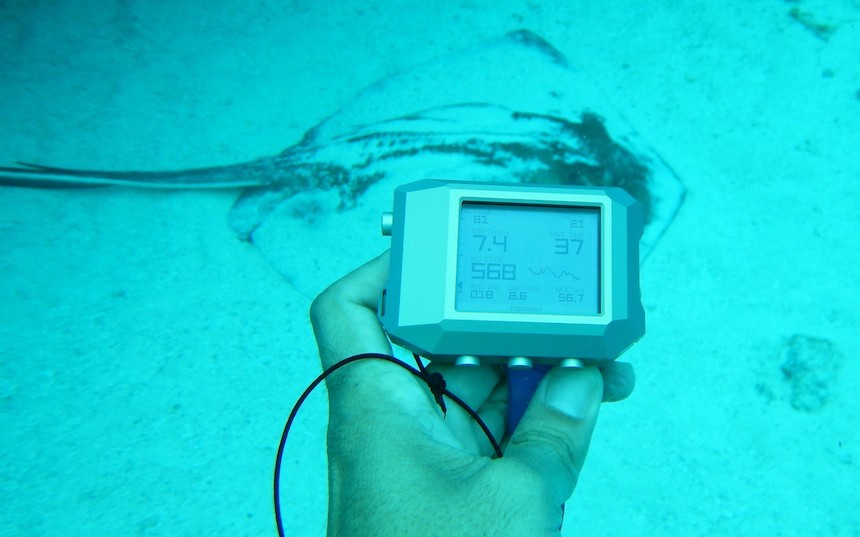
Once done with all your dives for the day, you can then download the data to your PC or Mac computers. First, you download the Linde Werdelin dive software and attach the Linde Werdelin Reef to your machine via USB cable.
While I am a huge fan of the Linde Werdelin philosophy of augmenting a really well-made mechanical watch with a state-of-the-art instrument, I cannot say I am 100% happy with the experience. Don’t get me wrong, the computer’s mechanical aspects are top-notch. Upon first seeing it, touching it, pressing the buttons, mounting and unmounting, you can see this is a well-made device, better than any other dive computer I have used. It is built like a brick and never experienced a scratch during all my dives, a sad fact I am not able to also say of the Linde Werdelin Oktopus BluMoon watch itself, as it did scratch ever so slightly at various places on the case.
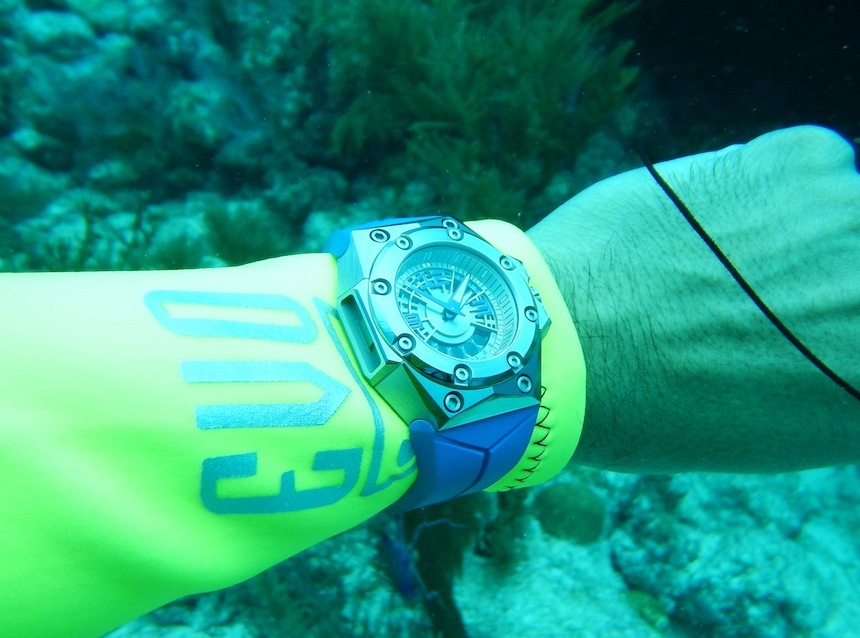
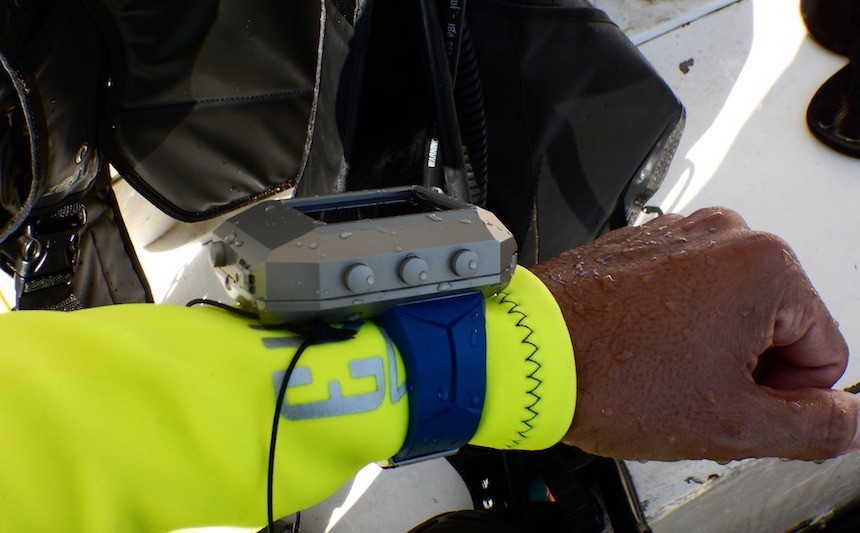
However, some aspects of the navigation need work, and out of the water, the buttons are super stiff. Thankfully, when underwater, especially with a glove, the buttons are actually quite usable. Finally, the experience transferring the data to a Mac could be better. It shows the lack of experience of a company focused on producing mechanical watches that they are constantly improving on. Would these annoyances stop me from recommending the Linde Werdelin Reef for diving? Absolutely not. And the reason is simple. Being an electronic device, the firmware can easily be updated.
So it’s entirely conceivable that the Linde Werdelin Reef will only get better with time. Like all of our smart devices, the beauty and power of this one comes in the constant upgrades. Of course, the danger is whether the electronics themselves can be upgraded and made better if the current microprocessor, memory, and associated circuitry can last the next five years of upgrades.
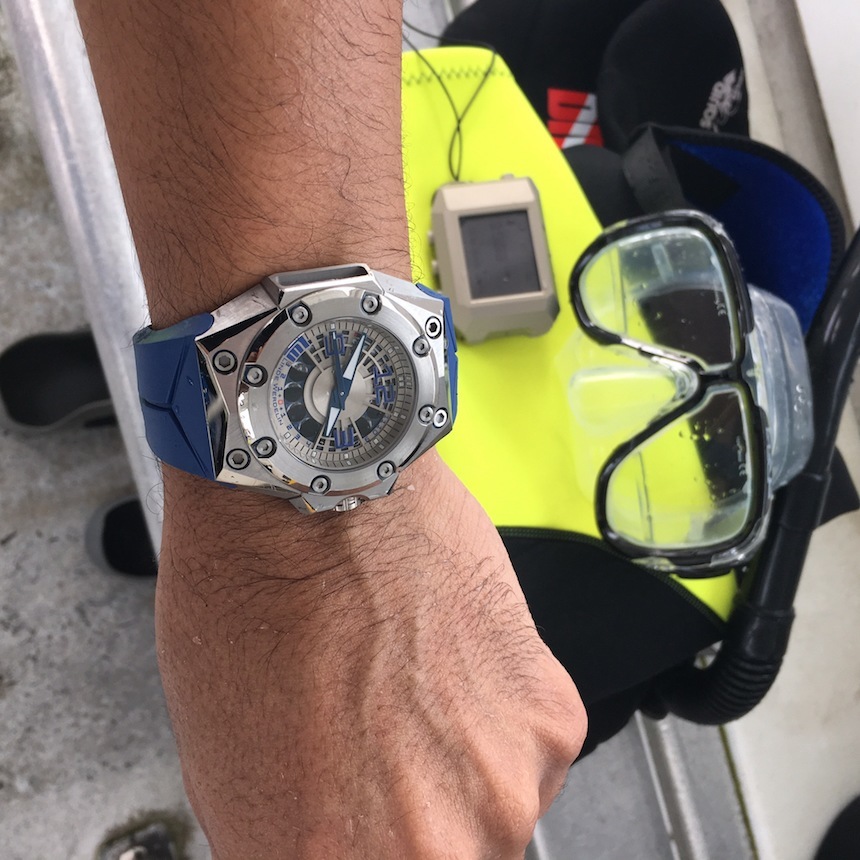
So, to review: If having a unique, stylish, sporty, rugged, and yet still casually dressy watch is what you are looking for, then look no further than the Linde Werdelin Oktopus BluMoon, which has a price of 16,000 CHF. It’s a serious diver, as well, especially when you use it with the Linde Werdelin Reef computer on dives. While not perfect, the Linde Werdelin Reef computer is a solid and useful device. It is also not cheap and is at the high-end of dive computer prices at 3,500 CHF. But in the end, it is perhaps a small price to pay for having a solid instrument that you can wear 100 feet underwater while also on the boat deck. The Linde Werdelin Oktopus BluMoon is versatile in its own right, and you can confidently wear it in social settings as well as on diving trips. lindewerdelin.com
Necessary Data
>Brand: Linde Werdelin
>Model: Oktopus BluMoon
>Price: CHF 16,000 + VAT
>Size: 44mm wide, by 15mm high, by 46mm lug-to-lug
>Weight: 110g with rubber strap
>Would reviewer personally wear it: Yes, yes, and yes.
>Friend we’d recommend it to first: Any outdoorsy type looking for a versatile sports watch that you can take to the beach, restaurant, and the clubs, and pretty much be guaranteed to be the only one wearing it.
>Worst characteristic of watch: While the combination of satin, brushed, and polished finishing gives the watch a unique look, it also means that it scratches easily – in particular, the polished sections. When I took it diving, I inevitably scratched it a bit. Now, this is nothing to worry about, as you could re-polish, and the scratches are minimal, not affecting the beauty of the case. However, if you want a sports watch that will remain looking new, this is not the one. The material and polishing technique will defeat that purpose. A tool watch with ceramic bezel, for instance, would resist scratches much better.
>Best characteristic of watch: The unique hand-finished case mixed with the mesmerizing skeleton dial, blued hands, and rotating moon phase: a stroke of genius.

